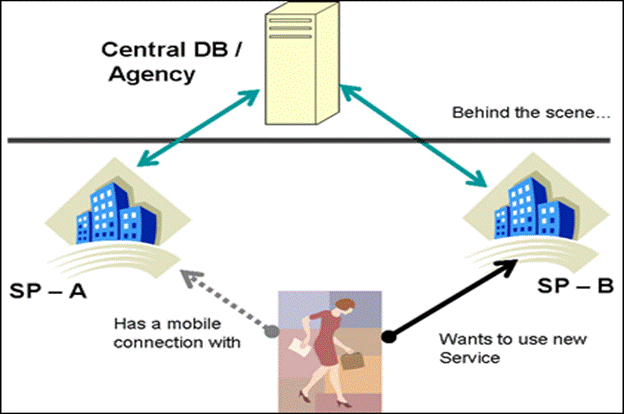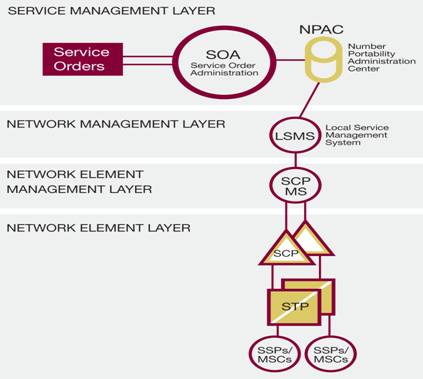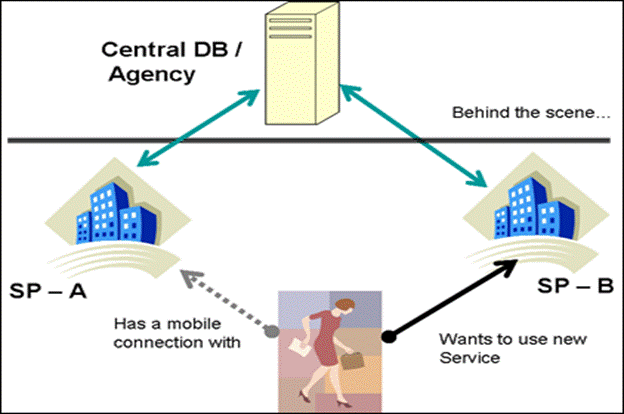





Published on Apr 02, 2024
Mobile Number Portability (MNP) requires that mobile telephone customers can keep their telephone number-including the prefix-when switching from one provider of mobile telecommunications services to another. In the absence of MNP, customers have to give up their number and must adopt a new one when they switch operators. As a result, customers face switching costs associated with informing people about changing their number, printing new business cards, missing valuable calls from people that do not have the new number, etc.
Based on these considerations, many regulatory authorities have imposed mandatory MNP-or are about to require its introduction-so as to reduce customers' switching costs, attempting to make mobile telecommunications more competitive.
Number Portability will allow subscribers to change their service provider while retaining their old mobile number. Portability benefits subscribers and increases the level of competition between service providers, rewarding service providers with the best customer service, network coverage, and service quality.
Number portability is a circuit-switch telecommunications network feature that enables end users to retain their telephone numbers when changing service providers, service types, and/or locations. When fully implemented nation wide by wireline and wireless providers, portability will remove one of the most significant deterrents to changing service, providing unprecedented convenience for consumers, and encouraging unrestrained competition in the telecommunications industry.
All Cell phones have special codes. These codes identify the phone, the phone's owner, & the service provider. Cell phones use high frequency radio signals to communicate with cell towers located throughout the calling area. These phones operate in the frequency range of 806-890 MHz.
• India is the 8th nation in Asia to launch MNP.
• Around 60 countries have already adopted MNP
SP-B goes to the central agency. Either with one request or with bulk of them. Queries for the details. This process is known as " Dipping ". The customer can be charged for this. The dipping charge may not be more than Rs 19 per request per customer. This is because the service providers need to setup infrastructure, and incur some expenses for portability. The central agency checks with the SP-A. This could include verifying whether the customer has paid all dues any completed pending commitments. The SP-A can also choose to check with customer to verify the authenticity of the request. However SP-A upon getting the instructions from Central agency need to finish the portability in one hour.
In case, the customer wants to cancel the request, she can do it within 24 hours from applying. In that case, she can't reclaim the dipping charge. Once into the new SP-B, the customer cann't move out and retain the number at the same time for the next three months. The entire process may take more than 2 days to a maximum of 4 days

It is widely recognized that the current method of allocating NPA-NXXs in blocks of 10,000 is inefficient and contributing to shortages of numbering resources. In an effort to find a more efficient method of allocation, FCC had approved a National Number Pooling plan for network resource optimization. Number pooling is defined as the ability to share an NPA-NXX among several facilities-based carriers within the same rate center. The concept of pooling is based on the fact that whole blocks of telephone numbers, held by some service providers, are not assigned or in service. Pooling allows these currently unassigned blocks of numbers to be reassigned to other service providers in need of numbers, as they request and show need. With pooling, service providers can maintain a small supply of numbers for expected subscriber assignment. As that supply depletes, service providers will request additional numbering resources from the industry inventory maintained by the Pooling Administrator.
When a "pooled" block of numbers is transferred from one service provider to another, there is some critical information that needs to be broadcast across the region to ensure effective data provisioning for call routing. To facilitate the broadcasting of "pooled" blocks and associated routing data, the Location Routing Method, the same platform used for LNP could be used for implementation of national number pooling. This method of resource allocation allows NXXs within a given NPA to be shared among entities that offer service to subscribers within a defined geographic area (rate center). Specifically, it allows the assignment of numbers to competitive service providers in blocks of 1000.
Basic components required to deploy MNP
o Service Order Administration (SOP)
o Number Portability Administration Center (NPAC)
o Service Control Point Management Server (SCP MS)
o Local Service Management System (LSM)
o Signal Transfer Point (STP)
o Service Control Point (SCP)
o Service Control Point/ Mobile Switch Center (SCP/MSC)

Service order administration provides the functionality to interface to carriers’ order and provisioning systems in order to update the NPAC for access by all other carriers. The SOA’s primary functions include subscription audit request/management; data administration; data transfer to the NPAC; report generation; bulk-file parse and upload; subscription tracking; legacy order entry interface; and logging. Depending on an individual service provider’s requirements, the SOA may interface with multiple NPACs to allow for nationwide number portability.
The carrier-to-SOA connection may be custom-designed to interface with existing carrier order entry systems. However, the SOA interface to the NPAC is a common management information service element (CMISE), providing subscription management functions as well as logging, error reporting, and alarm functions. Specific industry-approved interface requirements are contained in the NANC Functional Requirements Specifications (FRS) and Interoperable Interface Specification (IIS).
The FCC’s First Report and Order, Docket No. 95-116 describes the third-party, neutral database administration function in support of number portability. Called the number portability administration center (NPAC), this database is designed to receive information from both the incumbent and new service providers, validate the information received, and download the new routing information when an activate message is received indicating that the customer has been physically connected to the new service provider’s network. Each ported number is a subscription version within NPAC that contains the new service provider’s ID, the location routing number (LRN) associated with the new switch, and routing data associated with additional services the customer may request (for example, line information database (LIDB), calling name delivery (CNAM), and so on).
The NPAC also maintains a record of all ported numbers and a history file of all transactions relating to the porting of a number. The NPAC provides audit functionality and the capability to retransmit subscription version information to local service management systems under certain conditions. The NPAC is not involved in real-time call processing.
The NPAC provides management, administration, oversight, and integration of NPAC operations, hardware and software development, and all maintenance related functions. It is responsible for meeting performance standards established by the industry and providing user and technical support services and training for industry participants on an ongoing basis.
The service control point management system provides interface services between the LSMS and the SCP. The SCP MS may or may not be physically integrated with the SCP.
The local service management system is a fault-tolerant hardware and software platform that contains the database of information required to enable routing and call completion to ported telephone numbers. The primary functions of the LSMS are subscription management, network data management, service provider data management, error processing and notification, transaction event logging and reporting, transmission of activation/deactivation events to the network elements, and audits.
The LSMS interface with the NPAC provides real-time activation/deactivation information upon download from the NPAC and can send responses to the NPAC once a message or subscription version is processed. Similar to the SOA, the interface between the LSMS and the NPAC is CMISE and contains capabilities for event logging, security, and alarming. The LSMS is expected to mirror NPAC ported routing information and can request updates from the NPAC in a variety of ways if database synchronization is in question. Specific industry approved interface requirements are contained in the NANC FRS and IIS
The number portability database contains the routing information necessary to support number portability. The NPDB provides the LNP association between the called party and the carrier LRN, identifying the switch to which the call should be routed. The NPDB stores all ported numbers within the ported domain. Carriers can choose between two different LNP database architectures for accessing the LRN associated with a particular directory number: an integrated STP/SCP configuration or an STP with an adjunct SCP.
All Cell phones have special codes. These codes identify the phone, the phone’s owner, & the service provider. Cell phones use high frequency radio signals to communicate with cell towers located throughout the calling area. These phones operate in the frequency range of 806-890 MHz.

• India is the 8th nation in Asia to launch MNP.
• Around 60 countries have already adopted MNP
The process works as follows –
• A customer who has a mobile number connection active for three months (90 days) with Service Provider SP-A, wants to use new service from Service provider SP-B. She wants to retain her current mobile number.
• She goes to the SP-B. Fills up forms, giving him enough details. Decides on date when to move into the new service.
• SP-B goes to the central agency. Either with one request or with bulk of them. Queries for the details. This process is known as “Dipping”. The customer can be charged for this. The dipping charge may not be more than Rs 19 per request per customer. This is because the service providers need to setup infrastructure, and incur some expenses for portability.
• The central agency checks with the SP-A. This could include verifying whether the customer has paid all dues any completed pending commitments. The SP-A can also choose to check with customer to verify the authenticity of the request. However SP-A upon getting the instructions from Central agency need to finish the portability in one hour.
• In case, the customer wants to cancel the request, she can do it within 24 hours from applying. In that case, she can’t reclaim the dipping charge.
• Once into the new SP-B, the customer cann’t move out and retain the number at the same time for the next three months.
• The entire process may take more than 2 days to a maximum of 4 days.
| Are you interested in this topic.Then mail to us immediately to get the full report.
email :- contactv2@gmail.com |